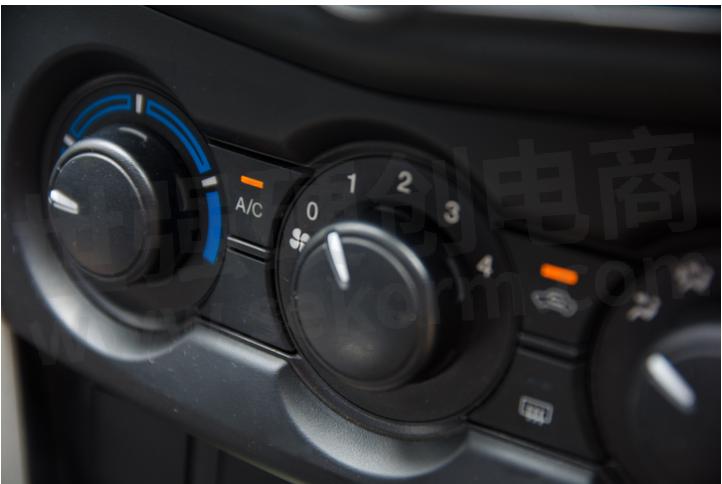Electric Vehicle Hvac System Optimization With Sensor Technology

In the typical household, Heating, Ventilation, and Air conditioning, (HVAC) associated costs are one of the biggest contributors to a monthly electric bill.
To keep an indoor environment comfortable, residential and industrial HVAC systems require a lot of power for operation as they operate almost continuously year-round.

The same principles apply to HVAC systems in electric vehicles (EVs). Though the inside of an EV is smaller than that of a home, it still takes a lot of energy to run an HVAC system and keep the cabin’s temperature comfortable, especially in very hot or very cold climates.
Unlike a home heating and cooling system which draws power from the grid, an EV’s HVAC system only has one source of energy: the vehicle’s traction battery. Operation of an electric vehicle’s automatic HVAC system acts as a parasitic loss on the main battery, robbing it of range. In order to minimize parasitic loss and to obtain maximum Coefficient of Performance (COP) for the HVAC system, EV’s deploy more sophisticated heat pumps and complex heating and cooling loops for the cabin, motors, battery, and inverters than legacy internal combustion engine (ICE) systems. These new systems require smart sensing of components to flow refrigerant and coolant at precisely the appropriate temperature and flow rate to add or remove heat as necessary.
THE STRESS AN HVAC SYSTEM PUTS ON AN EV’S BATTERY
Latest generation automotive heat pump systems provide highly efficient heating and cooling of the occupant space that is noticeable by the driver and passengers and provide features that allow the driver to leave the vehicle unattended on a hot or cold day and return to a comfortable temperature, improving the experience over legacy ICE systems. These new systems also perform the duties of providing optimum temperature for the battery, motors, and inverters quietly in the background without requiring input from the operator, and this is thanks to precision monitoring of the various subsystems from smart sensors.
In the short term, running an EV’s HVAC has an immediate impact on the vehicle’s battery -- the system reduces the amount of available power. With the battery’s stored energy going toward managing the cabin’s environment, an EV’s range-per-charge decreases. In extreme conditions -- such as running a heater in sub-zero temperatures or the A/C in oppressive heat -- the HVAC system power use can reduce range by nearly 100 miles.
Over the course of an EV battery’s useful life, stress and recharging take a toll on the power bank. Just like the pair of rechargeable AA batteries in your TV remote, over time an EV’s battery loses capacity (the amount of power it can hold), the impact of the HVAC system can have a greater effect on overall range.
THE SENSORS NEEDED FOR ELECTRIC VEHICLE HVAC SYSTEM OPTIMIZATION
Since HVAC use in an EV is taxing to its battery, optimizing the system is critical for preserving the overall performance of the vehicle.
Fortunately, EV HVAC systems are more sophisticated than those in your home. With smart electric vehicle sensor technology, they’re able to practically regulate themselves and manage their energy consumption. This isn’t possible, however, without sensor technology providing the feedback to the system and its operator for it to run efficiently and use only the power necessary.
Sensors that are a must for optimizing EV HVAC performance include:
outside air temperature sensor
Unless you’ve selected the air recirculation option for an EV’s HVAC, the air that’s heated or cooled for the cabin’s climate comes from outside. An outside air temperature sensor provides the data for how hard the HVAC system will need to work to bring air temperatures into the desired range. For instance, heating -20℉ air is going to take more power to warm up than air at 20℉. The outside air temperature sensor is also critical to modeling the heat rejection from the various components and heat exchangers.
discharge air temperature sensor
Just as understanding the starting temperature of the air is important to regulating an HVAC system and its power consumption, so too is the temperature of air that’s been heated or cooled. A discharge air temperature sensor tells the system how hot or cold air exiting the HVAC system is. With that information, the system can determine if it needs more or less energy to bring air temperatures within a comfortable range in the cabin.
refrigerant temperature sensor
Refrigerant is key for cooling a vehicle’s interior climate as well as motors, inverters, and battery, through an expansion cycle within the evaporator core, the refrigerant extracts heat from the cabin environment, then rejects it when compressed. Refrigerant temperature monitoring allows for precise control of the expansion cycle to minimize power loss while absorbing the maximum amount of heat.
REFRIGERANT PRESSURE SENSOR
Hand-in-hand with maintaining the proper refrigerant temperature is maintaining an appropriate refrigerant pressure. This provides critical information on the high-pressure side and low-pressure side of the electrically controlled expansion valves and monitor flow control valves and flow reversing functions, allowing for optimum heat exchange for each system subcomponent.
The evaporator core extracts heat from the passenger cabin through refrigerant expansion. The air passing through the evaporator fins can contain water vapor, which can freeze on the fins and restrict airflow. To prevent icing of the evaporator fins, the evaporator surface temperatures need to be controlled to 1 - 2 degrees C above the freezing point. An evaporator temperature sensor provides accurate temperature measurement to control the expansion valve which regulates the evaporator’s temperature and keeps it from dipping below the freezing point.
Air unable to move through an EV’s duct freely requires fans to use more energy, again drawing more power from an EV battery. Air flap sensors check how air moves through the system and give positional feedback used to switch between recirculating internal air or bringing air from outside.
Air filters within the HVAC system provide clean air to the cabin, eliminating dust, pollen, and other allergens from the cabin air space. In dusty environments, this filter can become plugged and restrict airflow into the vehicle, forcing the system to work harder. Air filter monitoring provides prognostic data to the vehicle, allowing for planned replacement of the air filter before it becomes a problem.
Taking the human element out of keeping the windshield free of condensation, an automatic defog sensor monitors the surface temperature, air temperature, and relative humidity to determine the condensation point of the windscreen. Through high accuracy monitoring, the system can automatically provide the minimum amount of heat to the defroster airflow to provide a clear windshield without overcompensation.
Taking HVAC optimization in a unique direction, sun load sensors measure the infrared spectra (the sunlight that provides heat) of light hitting an EV car and understand its angle and intensity. With this information, the EV’s HVAC can adjust how it is heating or cooling a car, providing warmer or cooler air where it’s needed most. As an example, if the sun is on the passenger side of the car, the sensor tells the system to provide more cooling to that side of the vehicle. All this thermal modeling requires accurate and reliable sensors to provide critical inputs for the control system.
seat and steering wheel temperature sensors
It might seem like an odd addition to this list, but it comes into play with managing an EV’s HVAC system. When a driver or passenger engages a seat heater or steering wheel warmer, that’s immediate feedback to the vehicle. With smart technology, the vehicle’s systems can prioritize power distribution to heat up the seat or steering wheel as opposed to heating up the air. Accurate sensing provides critical comfort feedback to make the occupants comfortable in the most efficient manner.
ELECTRIC VEHICLE HVAC SYSTEM OPTIMIZATION FOR PEAK PERFORMANCE
Considered a necessity for a comfortable ride, the operator interface for an EV’s HVAC system is designed to be intuitive with minimal requirements for the operator to monitor or modify.
Amphenol Sensors Smart sensor technology integrated into an EV’s HVAC system’s design ensures the vehicle lives up to expectations and runs as intended with minimum waste energy and intelligence that allows the driver to focus on the road.
- +1 Like
- Add to Favorites
Recommend
- InvenSense Announces SensorStudio 2.3 Supporting Dataflow-Based Custom Sensors
- DS Sensors from Elastisense Sensor Technology Are Used to Monitor Longitudinal Expansion and Tilt/angel of The Bridge
- Mk20 Series of Cylindrical Reed Sensors, Ideal for Position and Limit Switches, Security, and Level Sensor Applications
- TT Electronics to Feature FlexSense™ and Industry-leading Optoelectronics Portfolio at Sensors Converge 2023
- With FlexSense™ Patented Optical Sensor, TT Electronics Named a 2023 Best of Sensors Awards Finalist
- TT Electronics to Feature FlexSense™ and Industry-leading Optoelectronics Sensors Portfolio at Sensors Converge 2022
- TT Electronics to Showcase Comprehensive Portfolio of Sensors and Passive Components at Shanghai International Industrial Automation and Robot Exhibition
- Bridge Monitoring Made Easy with IBridge Based on ElastiSense Two Sensors DS100
This document is provided by Sekorm Platform for VIP exclusive service. The copyright is owned by Sekorm. Without authorization, any medias, websites or individual are not allowed to reprint. When authorizing the reprint, the link of www.sekorm.com must be indicated.





























































































































































































































































































































































































































































































































































































































































































































































































































































































